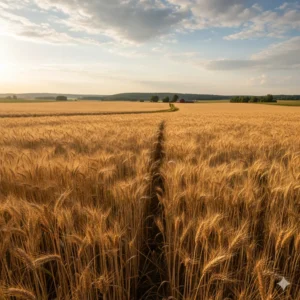Who is Shemita for?
An important theme in this week’s Sedra is that of the Shmitta (Sabbatical) year… While the Torah consistently associates Shmitta with Shabbos, it becomes at first glance increasingly inconsistent as to the purpose, or reason, for this ‘Shabbos’. The Passuk first tells us that it is for Hashem, then that it’s a Shabbos for the land… Then further, the Torah states that it is a Shabbos for you/us… Who indeed is it meant for?…
Brit Mila and Shemita
The Zohar-Hakadosh… tells us that Shmitta is a year of rest for all those who have a Bris-Mila and… an Eved (non-Jewish slave) consequently also has an obligation to rest since he is circumcised… What connection can there be between Shmitta and Bris-Mila.
…The Torah’s definition of the weekly cycle is that we work for the first six days and then rest on the seventh… The idea of the seventh day as a day of rest is that… On the Seventh day we rest because… on the seventh day Hashem had completed the creation of the world. In essence, the number seven represents the completeness of nature.
A Bris-Mila is given on the eighth day, right after the passing of seven days, so as to symbolize the fact that we now have a person who has completed his first full natural cycle. At the same time, we recognize that nature is really far more then Mother Nature, that it is Divine Providence itself. Thus Mila is performed on the eighth do so as to symbolize that in reality there are no such bounds of nature because nature is merely a manifestation of Hashem running his creation.
Recognizing Hashem Through Nature
We toil the soil for six years in the hope that a combination of our hard work with a helping hand from Mother Nature will let us see the fruits of our labors. Thus, the most natural thought would be that Shmitta is merely an opportunity for us to rest.
Comes the Torah and tells us otherwise. The Torah says it is a Shabbos for Hashem. In other words: it is a Shabbos for us to reflect upon the fact that it is not our handiwork but rather Hashem’s involvement that allows for our success.
The Torah tells us it is also a Shabbos for the land. The land is an inanimate object. It doesn’t require rest. The purpose for the land’s rest is to tell us that it isn’t Mother Nature but rather Hashem’s nature.
Once all this is established it then can become a Shabbos for us, we can then rest and enjoy the synthesis that we have achieved with Hashem.
We can now more fully understand the correlation between having a Bris-Mila and observing Shmitta… Mila is the ultimate sign of our recognition of Hashem’s superiority and utter control. Shmitta is the ultimate act of understanding that it is indeed so.
DISCLAIMER
The above excerpts/quotes are provided by Emor precisely as they appear in the original source, without any modifications or corrections to typos. Text within square brackets, as well as subtitles and bold formatting, are added by Emor for emphasis, clarification, or commentary, and the original content has not been changed.

